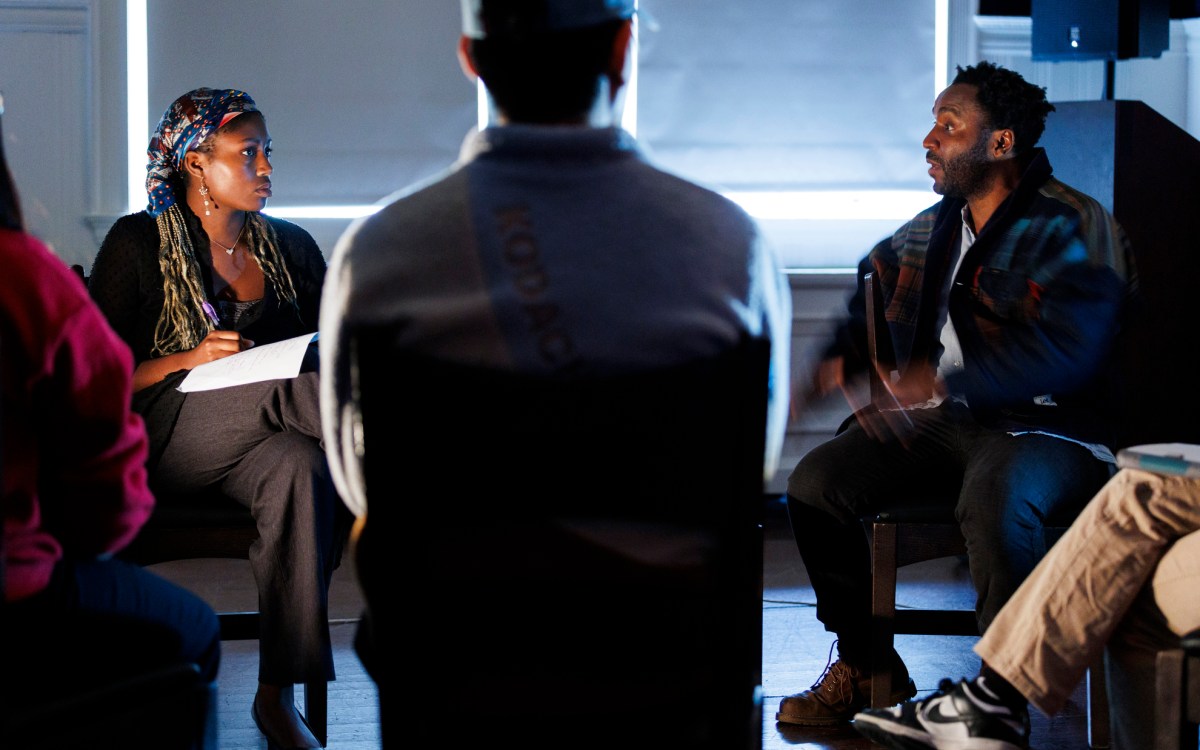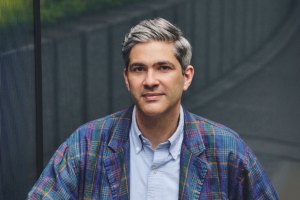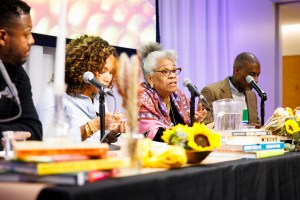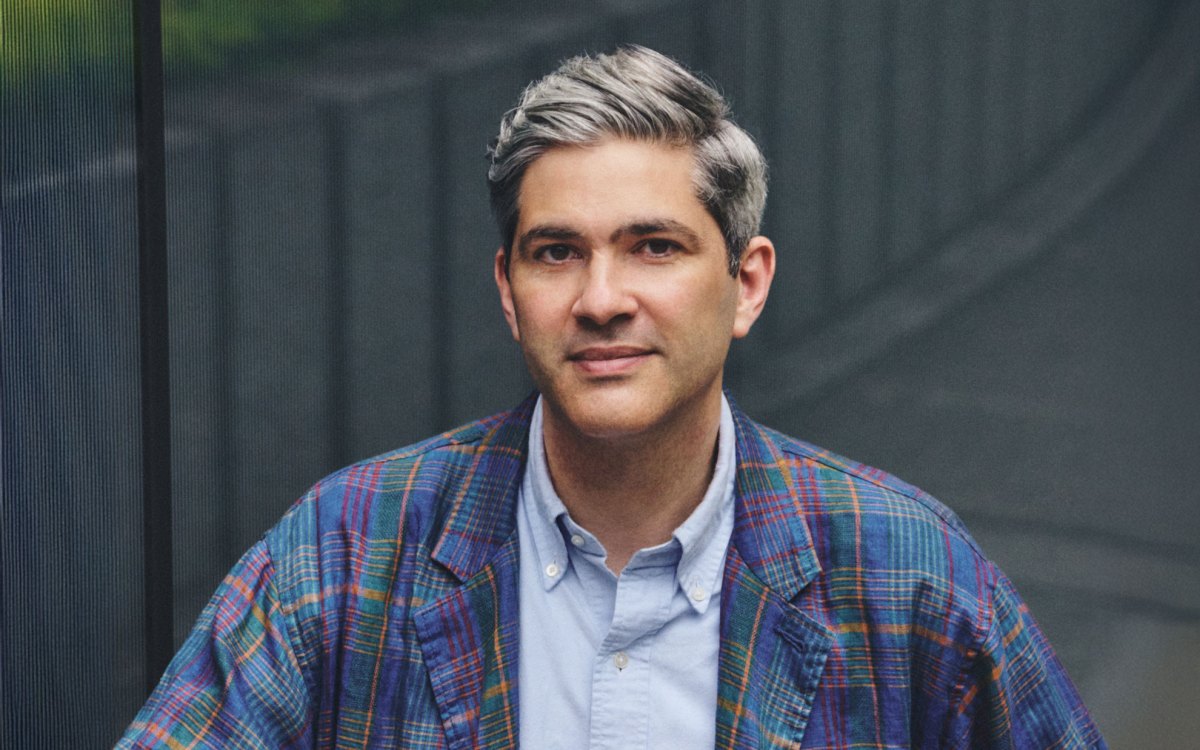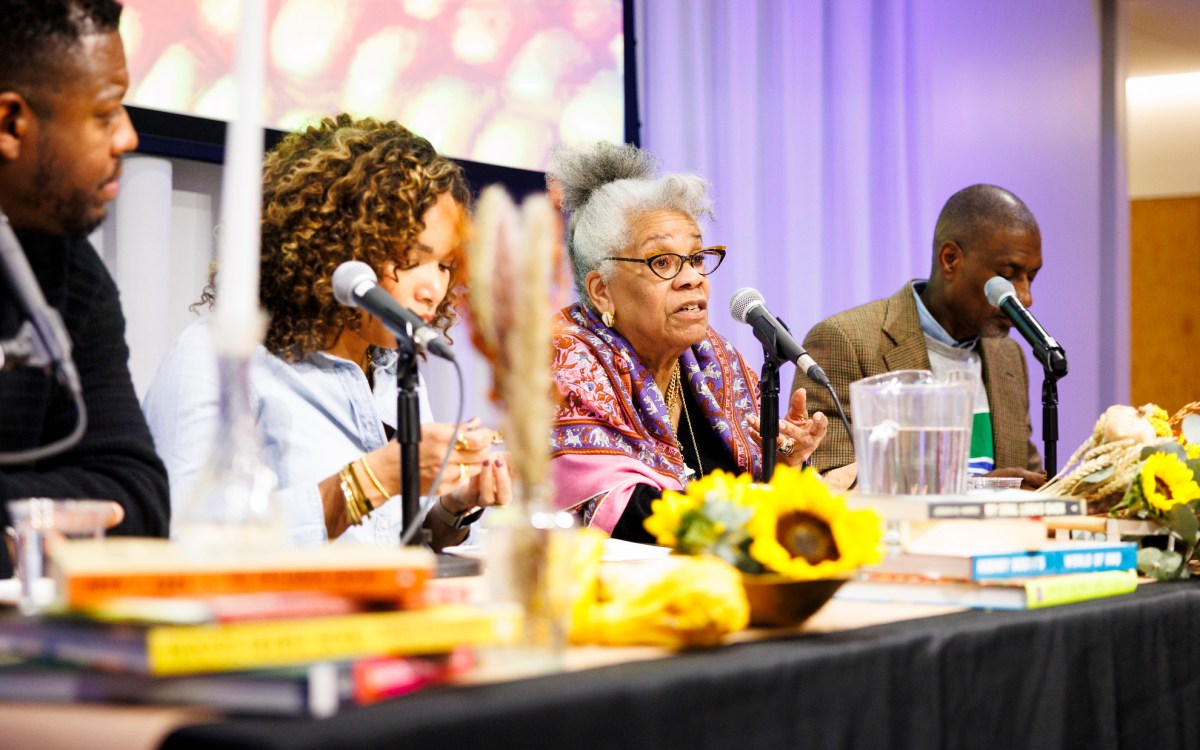‘We don’t need zombies to do ourselves in as a species’
Illustration by Liz Zonarich/Harvard Staff
How a fake medical paper sparked novel once optioned by director of ‘Night of the Living Dead’
Steven Schlozman was 11 years old when he watched “Salem’s Lot,” a made-for-TV movie based on the Stephen King book about a Maine town invaded by vampires. He was bitten. After experiencing a “fun kind of scare,” he became a horror fan.
A former assistant professor of psychiatry at Harvard Medical School, Schlozman is the author of “The Zombie Autopsies: Secret Notebooks from the Apocalypse” (2011), whose film rights at one time were optioned by the late George Romero, director of the archetypal zombie horror film “Night of the Living Dead” (1968).
In this interview, which has been edited for clarity and length, Schlozman talks about why he believes zombies are the scariest horror trope.
Can you explain the psychology behind the attraction to horror?
In terms of psychology, there are several theories. There’s the idea that watching a horror movie is experiencing fear in a safe environment, similar to riding a roller coaster. A cognitive explanation is that some people like horror films because they like to figure out what makes them scared. It’s a process of metacognition; it’s thinking about what you’re thinking. Because at the end of the day, you’re sitting in a movie theater, or at home, and there’s nothing really to be afraid of.
There’s also a whole literature on the thrill-seeking temperament. These are folks who get a serotonin or a dopamine rush with the thrill. You don’t really think your life is in danger for something that’s happening on a 2D screen, but the thrill of it makes you feel euphoric. There is also the catharsis theory, which allows us a release of emotions. Lots of studies say that people actually feel calmer and even less sad after watching a horror film.
In a famous essay, Stephen King talks about the need for horror movies as a kind of release valve for our worst impulses. What is your take?
We’ve been telling scary stories since we could tell stories. A lot of stories we read in our childhood are scary stories, and who has not enjoyed listening to a scary story around the campfire?
“We need horror stories because they help us confront our fears, and they allow us to have hard conversations about things that we have a hard time talking about, except in the displacement of a movie. ”
We need horror stories because they help us confront our fears, and they allow us to have hard conversations about things that we have a hard time talking about, except in the displacement of a movie. “Rosemary’s Baby” (1968) deals with the plights of motherhood, “Night of the Living Dead” (1968) and Get Out” (2017) with racism, and “The Babadook” (2014) with trauma and the challenges of having a child who can be difficult to manage. There is also the fear of death, and of the unknown. We fear death because we don’t know what happens after we die. Horror films allow you to deal with fears of what is unknowable.
Let’s talk about zombies. Why are zombies more terrifying than vampires, werewolves, or ghosts?
What’s scary about zombies is that they look so much like us; they were humans before they were infected, but they’re not humans anymore. Even if a zombie looks like your grandmother, when she gets close to you, she’ll lunge and bite you, and it’s a done deal. But the really terrifying thing about zombies isn’t that they will bite you and turn you into a zombie; it’s the idea that humans can get robbed of themselves, and that’s really scary. The idea of a person not being themselves, but still recognizable as a person, is a terrifying notion. It’s also what scares us about sick people because if someone is very ill, they stop looking like themselves, or at least they look like a sick version of themselves.
In your novel, you explained in a scientific way what’s going in the brains and bodies of zombies. Can you tell us more?
I wrote a fake medical paper about zombies, and that was the origin of my book. It’s an epistolary novel, which is a series of diary entries or letters, combining real references with fake references. I wanted it to feel real. I wanted it to feel possible. I came up with a fake name for the zombie disease based on its symptoms. I called it Ataxic Neurodegenerative Satiety Deficiency Syndrome (ANSD). Ataxic means loss of balance; neurodegenerative refers to the brain’s degradation; satiety deficiency means that the satiety regions of the stomach are no longer functioning, so you just keep eating. And syndrome is just a fancy word in medicine for “We don’t actually know what causes this.”
I explain zombie neurology by pointing at different impaired regions of the zombie brain. When you look at the stumbling ghouls in Romero’s “Night of the Living Dead,” you notice that they have lost their sense of balance, which is located in the basal ganglia. They can’t think very well or even open a window, so there must be something wrong with the frontal lobe. They’re hungry all the time, so their satiety regions are not functioning well. When I wrote the novel, I made the zombie disease to be a result of a manufactured pathogen by people who bet against the market when it plunged. I wrote the book in 2011, and the financial crash of 2008 was still on my mind. In most zombie movies, the bad guy is never the zombies.
George Romero, the film director, praised your novel, and the two of you were working on a screenplay. What happened?
George optioned the film rights for my book. He and I worked on the screenplay together, but no one bought it. Someday, somebody will hopefully buy it. It’s been optioned two more times since then, and it’s never been made. George was a lovely person; we enjoyed spending time with each other. He was a little melancholic about what had happened to zombies, that they have become a video game thing. He wanted to get away from that; he wanted it to be, ultimately, a kind of sad story.
A common Google search asks whether zombies can exist. Can they?
No. In fact, when I was at Harvard, they made me promise, as the director of medical student education in psychiatry at Harvard Medical School, to always say that my book was a made-up story, and that zombies cannot exist. There are people who can have injuries to their brains, and they can remind you of these cinematic characters. But we don’t need zombies to do ourselves in as a species.
Another common search asks: If zombies existed, what would be the best way to kill them?
According to Romero’s “Night of the Living Dead,” the ghouls can only be killed through shooting or hitting them in the head. By damaging zombies’ brain, they suffer an interruption of the brainstem, which regulates the brain’s regions that are responsible for all the vital functions such as heart rate, breathing, and blood pressure. Only then can you stop them altogether.
